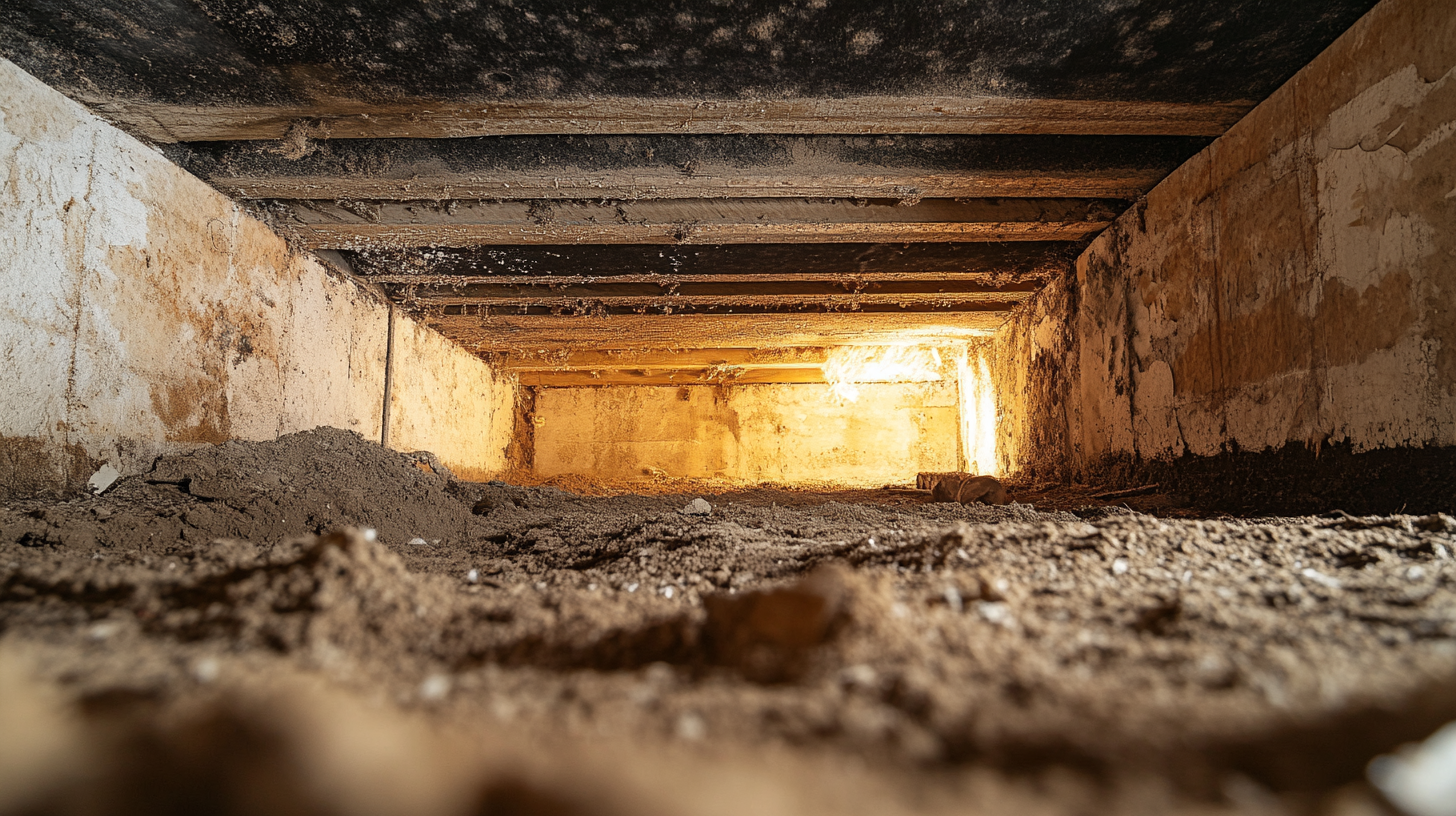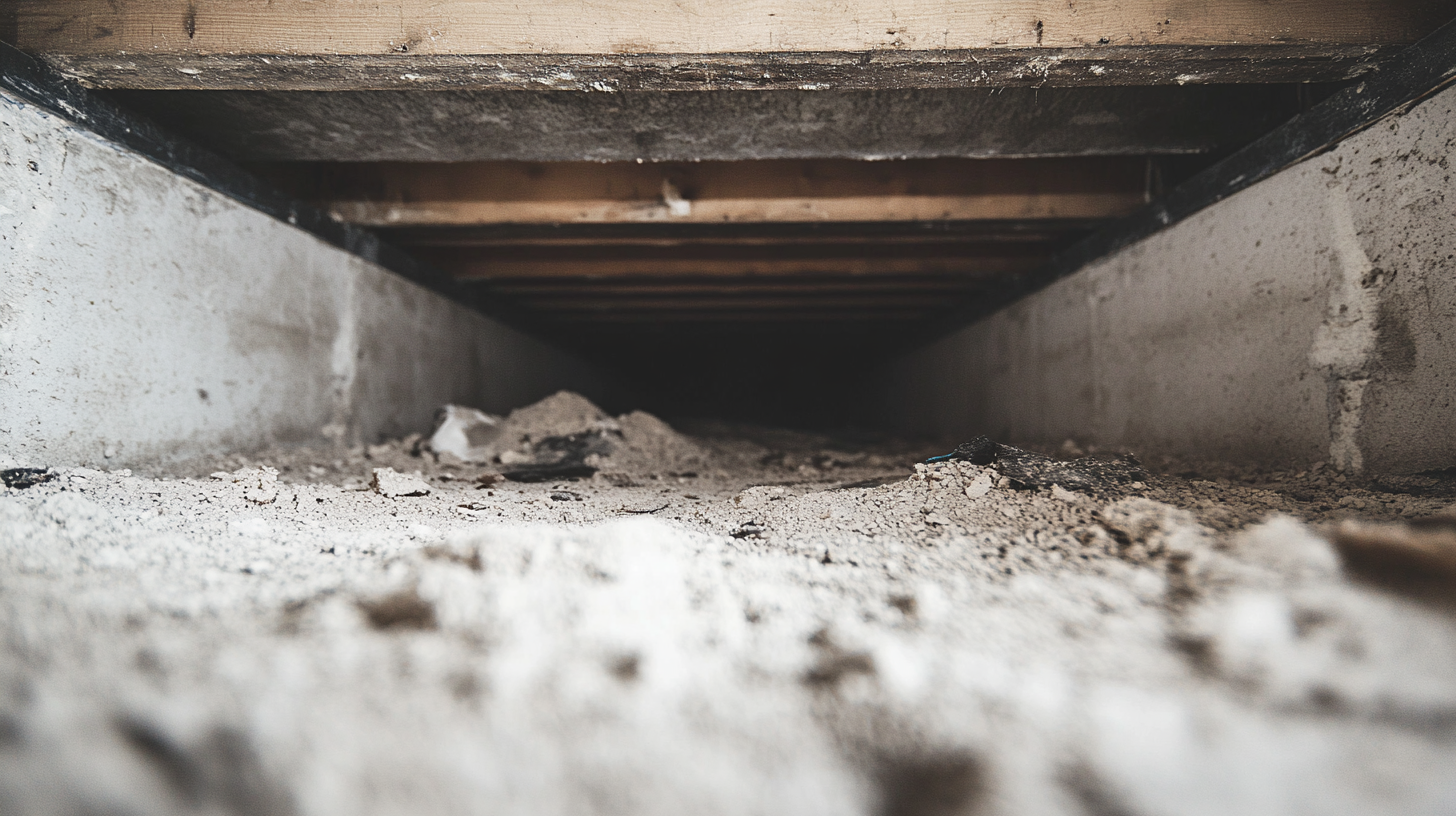Long-Term Effects of Smoke Exposure

Smoke exposure, whether from accidental fires, industrial incidents, or even habitual smoking, poses significant health risks that extend far beyond the immediate discomfort of smoke inhalation. This blog aims to shed light on both the immediate and long-term health risks associated with smoke exposure, emphasizing the critical importance of awareness and the adoption of preventive measures.
The immediate effects of smoke exposure are often visible and palpable, ranging from respiratory difficulties and eye irritation to headaches and nausea. However, the less apparent long-term consequences can be even more detrimental, potentially leading to chronic respiratory conditions, cardiovascular diseases, and an increased risk of cancer. These risks underscore the need for a deeper understanding of smoke's impact on health.
In commercial and residential settings alike, the presence of smoke can be a silent yet pervasive threat to well-being. For businesses, this understanding is not just a matter of employee health but also a legal responsibility, necessitating adherence to health and safety standards. For individuals, it's about making informed choices and taking proactive steps to mitigate exposure.
In this blog, we will explore the various health risks associated with smoke exposure, delving into the science behind these effects and the body's response to smoke inhalation. We will also discuss practical and effective preventive measures that can be implemented in both personal and professional contexts. From improving ventilation systems to adopting strict fire safety protocols, our focus will be on strategies that can significantly reduce the risk of smoke exposure and safeguard health.
Join us as we navigate the often-overlooked yet crucial topic of smoke exposure and health, offering insights and guidance to help you stay informed and proactive in protecting yourself and others from its harmful effects.
The Nature of Smoke and Its Constituents
Smoke, a common byproduct of combustion, is more complex than it may appear. Understanding its composition and how it affects the human body is crucial, especially in contexts where smoke exposure is a risk. This section delves into the detailed composition of smoke and its physiological impacts.
Composition of Smoke
Smoke is a mixture of various chemicals and particles, each with distinct properties and health implications. Here’s a detailed explanation:
- Variety of Chemicals and Particles: Smoke comprises a range of substances, including:
- Carbon Monoxide: A colorless, odorless gas that can be lethal in high concentrations.
- Particulate Matter (PM): Microscopic particles that can penetrate deep into the lungs and bloodstream.
- Volatile Organic Compounds (VOCs): Chemicals like benzene and formaldehyde, which are known carcinogens.
- Polycyclic Aromatic Hydrocarbons (PAHs): Formed during the incomplete burning of organic matter, these compounds are also carcinogenic.
- Acid Gases: Such as sulfur dioxide and hydrogen chloride, which can irritate the respiratory system.
How Smoke Affects the Body
The inhalation of smoke can have various immediate and long-term effects on the body. Here’s an introduction to its physiological impact:
- Respiratory System: Smoke can cause immediate irritation to the airways, leading to coughing, wheezing, and shortness of breath. Chronic exposure can exacerbate lung diseases like asthma and COPD.
- Cardiovascular System: Particulate matter in smoke can affect heart health, increasing the risk of heart attacks and strokes.
- Neurological Effects: Carbon monoxide in smoke can lead to headaches, dizziness, and in severe cases, neurological damage.
- Long-Term Health Risks: Prolonged exposure to smoke's carcinogenic compounds can increase the risk of developing cancers, particularly lung cancer.
- Vulnerable Populations: Children, the elderly, and individuals with pre-existing health conditions are more susceptible to the adverse effects of smoke.
Understanding the composition of smoke and its impact on the body is essential for assessing risks, implementing safety measures, and providing appropriate medical responses in cases of smoke exposure.
Long-Term Health Effects of Smoke Exposure
Prolonged exposure to smoke can have significant and lasting effects on an individual's health, particularly on the respiratory and cardiovascular systems. Understanding these long-term effects is crucial for both personal health and public safety. This section explores the impact of smoke exposure on the respiratory system and cardiovascular health.
Respiratory System Impact
Smoke inhalation can lead to several chronic respiratory conditions and affect the body's ability to fight respiratory infections. Here are some key points:
Chronic Bronchitis and Asthma:
- Long-term exposure to smoke can cause chronic bronchitis, characterized by persistent coughing and inflammation of the airways.
- Individuals with asthma may experience worsened symptoms and more frequent attacks due to prolonged smoke exposure.
Increased Susceptibility to Respiratory Infections:
- Smoke can impair the respiratory system's defenses, making individuals more susceptible to infections like pneumonia and bronchitis.
- The particulate matter in smoke can damage lung tissue and impair its function, further increasing vulnerability to infections.
Cardiovascular Risks
The impact of smoke exposure extends beyond the respiratory system, posing significant risks to heart health:
Long-Term Effects on Heart Health:
- Continuous exposure to the particulate matter in smoke is linked to an increased risk of heart disease.
- Smoke can contribute to the buildup of plaque in arteries, leading to conditions like atherosclerosis, which can increase the risk of heart attacks and strokes.
Increased Risk of Heart Disease:
- The chemicals in smoke can cause inflammation and oxidative stress, which are known contributors to heart disease.
- Smoke exposure can also lead to elevated blood pressure and reduced oxygenation of the blood, further stressing the cardiovascular system.
Understanding the long-term health effects of smoke exposure is essential for taking proactive measures to protect respiratory and cardiovascular health. This includes avoiding exposure, implementing smoke-free policies, and seeking medical advice if experiencing symptoms related to smoke inhalation.
Smoke Exposure and Cancer Risks
The link between smoke exposure and cancer is a critical public health concern. Various compounds found in smoke are known carcinogens, and numerous studies have established a connection between smoke exposure and an increased risk of developing cancer. This section discusses the carcinogenic compounds in smoke and introduces research findings on the associated cancer risks.
Carcinogens in Smoke
Smoke, whether from tobacco, wildfires, industrial processes, or household fires, contains a range of compounds that are potentially carcinogenic. Here’s an overview of these compounds and their effects:
Discussion on Carcinogenic Compounds in Smoke:
- Polycyclic Aromatic Hydrocarbons (PAHs): Formed during the incomplete burning of organic materials, PAHs are a group of chemicals known to cause cancer.
- Benzene: Commonly found in smoke, benzene is a well-established carcinogen linked to blood cancers like leukemia.
- Formaldehyde: Another carcinogen present in smoke, formaldehyde exposure is associated with cancers of the nose and throat.
- Acrolein and Acetaldehyde: These chemicals can damage DNA and are considered potential carcinogens.
Potential Effects of Carcinogens:
- These compounds can cause mutations in DNA, leading to uncontrolled cell growth and cancer.
- The risk of cancer depends on the duration and intensity of exposure, as well as individual susceptibility.
Studies Linking Smoke Exposure to Cancer
There is a substantial body of research linking smoke exposure to an increased risk of cancer. Here’s an introduction to some of these findings:
- Introduction of Research Findings on Smoke Exposure and Increased Cancer Risk:
- Studies have shown a strong link between tobacco smoke and lung cancer, as well as other types of cancers.
- Research on occupational exposure to smoke, such as firefighters, indicates a higher incidence of certain cancers.
- Recent studies on exposure to wildfire smoke also suggest potential long-term cancer risks, although more research is needed in this area.
Understanding the carcinogenic nature of smoke and being aware of the research linking smoke exposure to cancer are crucial for both individuals and policymakers. This knowledge can guide preventive strategies, inform public health policies, and underscore the importance of reducing exposure to smoke in various environments.
Psychological and Cognitive Impacts
While the physical health risks of smoke exposure are often highlighted, its psychological and cognitive impacts are equally significant but less discussed. Long-term exposure to smoke can have profound effects on mental health and cognitive abilities. This section explores the psychological effects of prolonged smoke exposure and its impact on cognitive functions.
Mental Health Considerations
The psychological impact of long-term smoke exposure can be varied and profound. Here’s an exploration of these effects:
- Exploration of the Psychological Effects of Long-Term Smoke Exposure:
- Stress and Anxiety: Continuous exposure to smoke, especially in situations like wildfires or industrial accidents, can lead to increased stress and anxiety levels.
- Trauma and PTSD: In cases where smoke exposure is linked to traumatic events, such as a house fire, individuals may experience symptoms of post-traumatic stress disorder (PTSD).
- Mood Disorders: There is evidence to suggest that prolonged exposure to polluted air, including smoke, can be linked to depression and other mood disorders.
- Impact on Quality of Life: Persistent health issues and environmental concerns related to smoke exposure can adversely affect one's overall quality of life and well-being.
Cognitive Function and Smoke Exposure
Prolonged exposure to smoke can also have implications for cognitive function. Here are some insights into this aspect:
- Insights into How Prolonged Exposure Can Affect Cognitive Abilities:
- Impaired Memory and Attention: Studies have shown that exposure to air pollution, including smoke, can lead to difficulties with memory, attention, and other cognitive functions.
- Developmental Impacts: In children, prolonged exposure to polluted air has been linked to developmental delays in cognitive abilities.
- Neuroinflammation: Certain components in smoke, like fine particulate matter, can cause inflammation in the brain, potentially leading to long-term cognitive effects.
- Vulnerability of the Elderly: Older adults may be particularly susceptible to the cognitive impacts of smoke exposure, exacerbating conditions like dementia or Alzheimer’s disease.
Understanding the psychological and cognitive impacts of smoke exposure is crucial for comprehensive health assessments and interventions. This knowledge underscores the importance of addressing both the physical and mental health aspects in the aftermath of smoke exposure.
Vulnerable Populations and Increased Risks
Certain groups in the population, such as children, the elderly, and individuals with pre-existing health conditions, are more vulnerable to the harmful effects of smoke exposure. Understanding these increased risks is crucial for protecting these groups and mitigating long-term health consequences. This section explores the specific risks and effects of smoke exposure on these vulnerable populations.
Children and Smoke Exposure
Children are particularly susceptible to the adverse effects of smoke exposure due to their developing bodies and respiratory systems. Here are the specific risks and long-term effects:
Specific Risks and Long-Term Effects on Children:
- Respiratory Problems: Children exposed to smoke are at a higher risk of developing respiratory infections, asthma, and reduced lung function.
- Developmental Issues: Prolonged exposure to smoke can impact the physical and cognitive development of children, potentially leading to learning difficulties and behavioral problems.
- Increased Sensitivity: Children's bodies are still developing, making them more sensitive to the toxic substances found in smoke.
- Long-Term Health Impacts: Early exposure to smoke can have lasting health effects, increasing the risk of chronic diseases later in life.
Elderly and Individuals with Pre-existing Conditions
Older adults and individuals with pre-existing health conditions are also at increased risk from smoke exposure. Here’s how they are disproportionately affected:
- How Smoke Exposure Disproportionately Affects Older Adults and Those with Pre-existing Health Conditions:
- Exacerbation of Existing Conditions: Smoke can worsen pre-existing conditions such as heart disease, COPD, and asthma.
- Reduced Immune Function: The elderly often have weakened immune systems, making them more susceptible to the harmful effects of smoke.
- Mobility Issues: Mobility challenges can make it difficult for older adults to quickly evacuate or avoid smoke-filled environments.
- Increased Risk of Complications: Both the elderly and those with chronic health conditions are at a higher risk of serious complications, including life-threatening respiratory issues, from smoke exposure.
Understanding the increased risks faced by children, the elderly, and individuals with pre-existing conditions is essential for implementing targeted protective measures and health interventions. This knowledge is vital for families, caregivers, and healthcare providers in preparing for and responding to smoke exposure incidents.
FAQs
Contact Fast Response Cleaning & Restoration Today!
Fast Response Cleaning & Restoration will do everything we can to ensure your experience with us is excellent.
Request A FREE Estimate
Request A FREE Estimate Form
CHECKOUT RECENT POST



Have an Emergency? We're Here to Help!
When it comes to disaster cleanup, we are a seasoned veteran in the industry and have helped hundreds of property owners just like you.
Our disaster recovery teams are available 24-7 to quickly clean up and repair disasters of all types.
